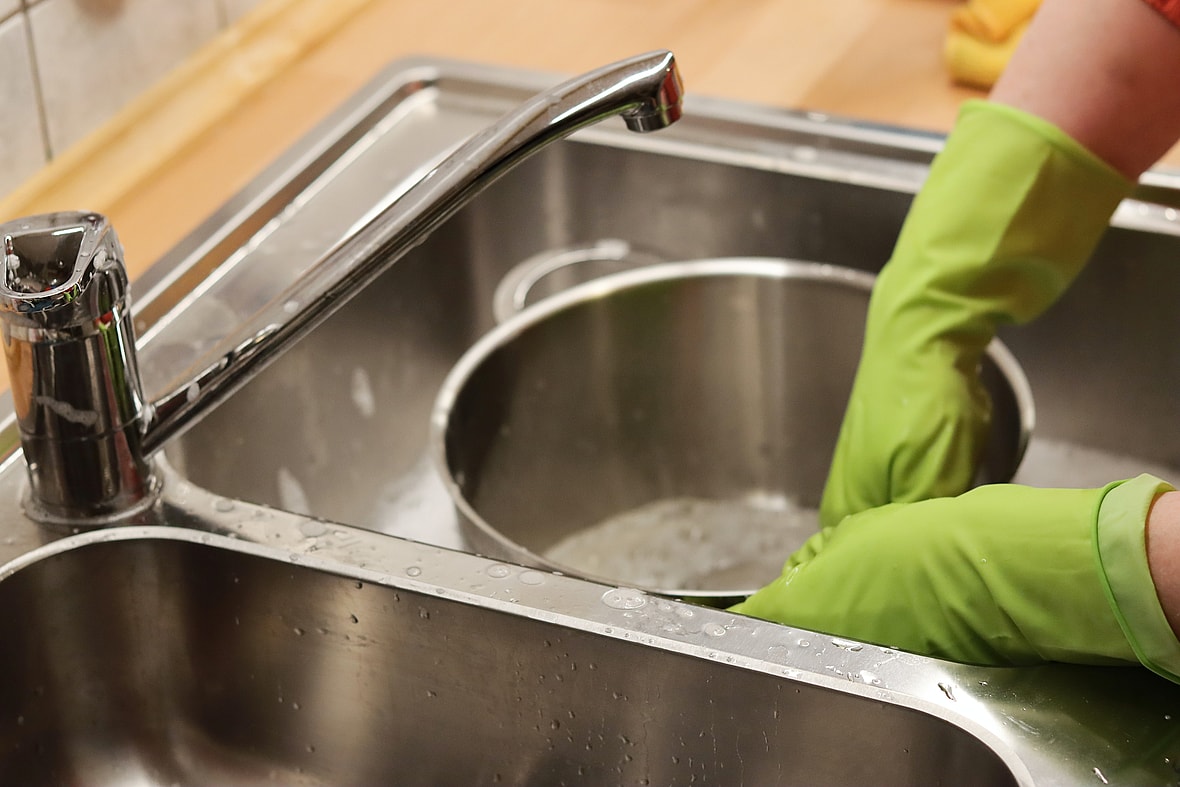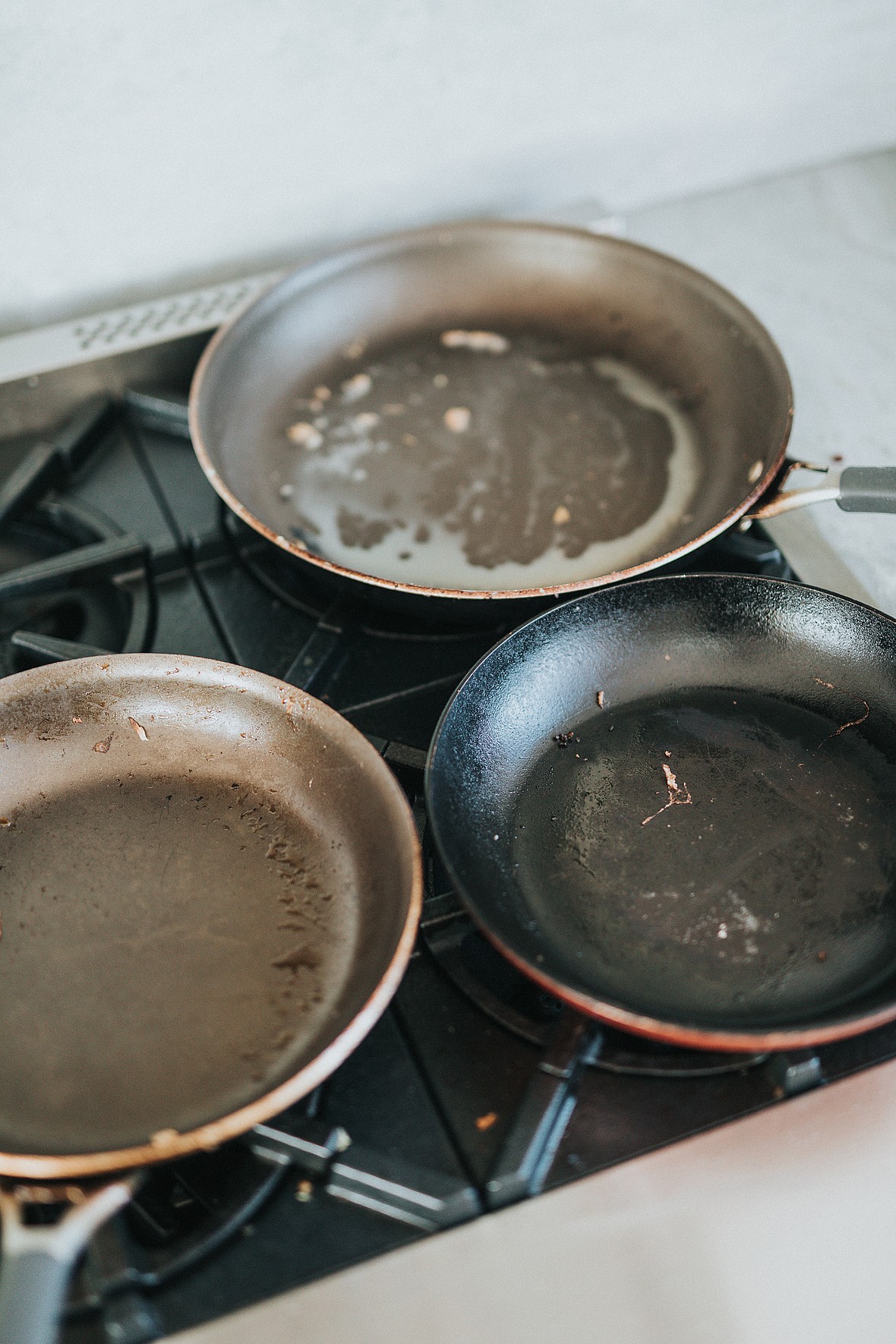
We’ve all been there—burnt food clinging to the bottom of your favorite pan. Whether it’s a stubborn layer of charred cheese or a forgotten stir-fry, burnt pans are a common kitchen challenges. Cleaning a burnt pan doesn’t have to involve harsh chemicals or endless scrubbing. With the right techniques, you can restore your favorite pan without damaging it. Here’s how to clean a burnt pan the right way, step-by-step.
Also Read: How to Disinfect a Couch: A Step-by-Step Cleaning Guide
What You’ll Need
Before you get started, make sure you have the following items on hand:
- Dish soap
- Baking soda
- White vinegar
- Scrub brush
- Non-abrasive sponge
- Water
How to Clean a Burnt Pan

1. Let the pan cool
The first thing you should do when you notice that your pan is burnt is to take it off the heat and let it cool down. If you try to clean it while it’s still hot, you could burn yourself or damage the pan even further. Once the pan has completely cooled down, safely dispose of excess oil or food debris.
2. Add dish soap and water
After pouring out the excess debris, add a generous amount of dish soap to the pan and fill it with water. Let it soak for a few minutes to loosen up any remaining burnt bits.
3. Use baking soda
If the dish soap and water aren’t enough to get rid of the burnt residue, add a couple of tablespoons of baking soda to the pan. Baking soda is a natural abrasive that can help to loosen up any remaining burnt bits without scratching at the bottom of your pan. Let it sit for a few minutes before moving on to the next step.
4. Scrub the pan
Use a non-abrasive sponge or scrub brush to scrub the pan gently. Avoid using anything too abrasive, such as steel wool or a metal scraper, as these can scratch the surface of the pan. Be patient and persistent, as it may take some time to get all of the burnt bits off.
5. Rinse with water
Once you’ve scrubbed the pan thoroughly, rinse it with water to remove any remaining soap or baking soda residue.
6. Use white vinegar
If there are still burnt bits stuck to the pan, try using white vinegar. Pour a small amount of white vinegar into the pan and let it sit for a few minutes. The acidity of the vinegar can help to break down any remaining burnt bits. After a few minutes, scrub the pan again and rinse it with water.
7. Dry the pan
Once you’ve cleaned the pan, use a clean towel to dry it off completely. If you leave any moisture on the pan, it could lead to rust or other damage.
Tips for Preventing Burnt Pans

Prevention is always the best cure, so here are a few tips to help you prevent burnt pans in the future:
- Keep an eye on the temperature of your stove. If it’s too hot, it can easily burn your food and your pan.
- Use a timer to keep track of how long your food has been cooking.
- Avoid using metal utensils on non-stick pans, as these can scratch the surface and make it more prone to burning.
- Clean your pans after each use to prevent any leftover food debris from burning the next time you cook.
- Coat the bottom of the pan with a high-quality grease or cooking oil before adding in ingredients.
FAQs
Can I use lemon juice instead of vinegar?
How can I prevent food from sticking to the pan?
You can also try using a non-stick cooking spray or adding a bit of oil or butter to the pan before cooking.
What should I do if the burnt bits won’t come off?
Can I use this method on other types of pans?
Can I use steel wool or abrasive cleaners to clean a burnt pan?
Can I soak the burnt pan overnight?
Remember, cleaning a burnt pan can be a tedious task, but with these steps and a little bit of patience, you can have your pan looking like new in no time. When people see burnt bits stuck on the bottom of a pan, it is very common to think “soak and then scrub until clean.” However, that might not be quite enough to make the pan look brand new again, depending on how stubborn the mess left behind is.
When it comes to the kitchen, we all need a little guidance. Plus, by taking preventative measures to avoid burning pans in the future, you can save yourself the headache of having to clean them like this.
A burnt pan can be a headache, but it’s not the end of the world. Whether you’re using natural cleaning agents, soaking, or scrubbing, the key is to be patient and gentle with your cookware. We hope that these steps helped you learn how to clean a burnt pan safely.
Explore More: 12 Holy Grail Costco Items Customers Swear By
